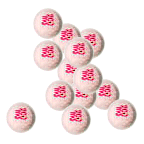

Tegretol is the brand name for Carbamazepine, chemically classified as 5H-dibenzazepine-5-carboxamide. According to Nidhi Kapoor, M.D., "Carbamazepine reduces the propagation of abnormal impulses in the brain by blocking sodium channels, thereby inhibiting the generation of repetitive action potentials in the epileptic focus." Introduced into the United States in 1974 (7b), this pharmacological drug is an anti-epileptic used for the treatment of simple and complex partial seizures, trigeminal neuralgia and bipolar disorders.I take the extended-release type of Tegretol, which is in the form of a small, round, hard, plastic pill. Each one has a tiny hole on one side, where the drug powder inside can seep out once it's in my body, going through the digestive track. And then the pills come out the other end (I know because I see them). I was taking two 200mg tablets a day until December, when I started taking three a day.
While I don't have any noticeable side effects, some of my research has turned up other cases of problems with the medication. As Adrienne Richards writes in her book, Epilepsy: A New Approach, "The toxicity of the anticonvulsants used to control seizures is finally being addressed in public." She cites a particular study in which Tegretol is found to be carcinogenic in laboratory rats (7c). Other documented side effects have included memory loss, high blood pressure, liver damage, slurred speech, depression, headaches, nystagmus, congestive heart failure, and more (7c). While I am very grateful that Tegretol seems to work well in my system, I also want to make sure I'm fully informed about the possible long-term consequences for taking this medication.
back to timeline | doctor checkup | back to index